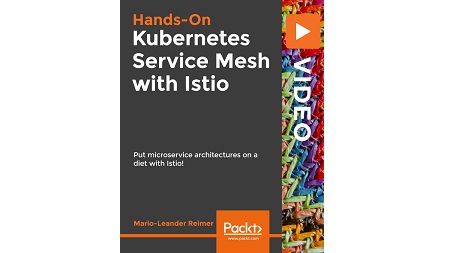
English | MP4 | AVC 1920×1080 | AAC 48KHz 2ch | 2h 18m | 352 MB
Hands-on traffic management, resiliency, diagnosability and security for microservice architectures with Istio and Kubernetes
Building microservice architectures is complex. Handling its complexities (such as circuit breaking, rate limiting, observability, or security) is usually left to development teams to implement.
Using well known open source frameworks is an option, but this will quickly lead to excessive library bloat and suddenly your services are not quite so micro anymore.
This course provides practical hands-on experience in using the Istio service mesh. Instead of implementing cross-cutting concerns within each service, you will see how a service mesh allows you to transparently inject and decorate the desired concerns into individual communication channels.
We discuss the conceptual Istio architecture with its main building blocks and how it works. Then demonstrate how to install Istio and use its traffic management, resilience, diagnosability, and security features.
By the end of this course, you will be ready to deploy Istio into production and run your next cloud-native microservice architecture.
Learn
- Explore the Istio architecture and its components
- Install the Istio service mesh in Kubernetes using Helm (and manually)
- Control ingress and egress traffic in the service mesh
- Apply path, header, and weight-based routing strategies
- Perform Blue/Green and Canary deployments with Istio
- Implement service resiliency using timeouts, circuit breakers, bulkheads, and retries
- Perform chaos testing by injecting faults and errors
- Secure the Istio service mesh with mutual TLS and authentication/authorization policies
- Explore and leverage Istio’s diagnosability features
Table of Contents
Getting Started with Istio
1 The Course Overview
2 Conceptual Istio Architecture and Components
3 Istio Glossary
4 Installing Istio by Hand
5 Installing Istio Using Helm
6 Deploying Service to the Mesh
Traffic Management and Routing
7 Controlling Ingress Traffic
8 Path and Header Based Routing
9 Weight Based Routing
10 Blue Green and Canary Deployments
11 Controlling Egress Traffic
Service Resilience
12 Adding a Circuit Breaker
13 Setting Request Timeouts
14 Connection Pools and Bulk Heading
15 Retries
16 Rate Limiting
Chaos Testing
17 Injecting HTTP Delay Fault
18 Injecting HTTP Abort Fault
19 Using Envoy Filters
20 Perform Traffic Mirroring
Securing the Mesh
21 Security by Default – Zero Trust Networks
22 Mutual TLS Between Services
23 Enabling Strict Mode
24 Authorization on Ingress Gateway
25 Authorization for HTTP Traffic
26 Authorization with JWT
Diagnosability – Monitoring, Tracing, and Visualization
27 The Diagnosability Triangle
28 Metrics with Prometheus
29 Operational Dashboards with Grafana
30 Call Tracing with Jaeger
31 Access Logs with Envoy
32 Mesh Visualization with Kiali
Resolve the captcha to access the links!